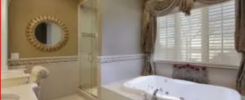When it comes to replacing the older windows on your home, many homeowners tend to think of the project in the light of just another expense to be paid for, and tally the cost of the project up against other cosmetic improvement projects that you’ve been weighing. The truth of the matter, however, is this: replacing the old windows on your home, while also improving the visual appeal of your home both inside and out, can actually save you a great deal of money as well. Most homeowners don’t tend to realize just how much money their old windows could be costing them over the course of the average year, even if they seem to be functioning normally for all intents and purposes. To help highlight the importance of replacing your old windows when it comes time, our Denver remodeling experts at Christie’s Design Build Remodeling have put together this short list detailing just a couple of the ways that investing in new windows could actually save you a good deal of money in the long run.
Ultraviolet Light
Older windows tend to be comprised of plain or untreated glass in many cases, and one of the biggest issues with these types of windows is that they allow in a lot of unfiltered UV light. UV rays are responsible for a great deal of the perpetual damage that occurs inside your home, and there are a number of different belongings that can suffer the same kind of damage that they would if you left them outside if your windows aren’t filtering out that light. This usually results in your the fading and discoloration of your carpets, any art that you might have hanging on your walls, and even your furniture and upholstery. Your blinds can even start to become brittle over time as they are constantly exposed to them. Replacing all of these damaged items over time can often add up to a much more costly venture than just investing in new windows that will help you filter out this damaging light a little bit better.
Heat Transfer
For the most part, older windows just aren’t as well insulated as newer windows, and this generally means that they will have trouble keeping out the heat during the summer, and keeping warm air inside during the winter. This is often because their frames don’t have the right kind of insulation, but it can also be due to damage that has been suffered over time. Some of the more common frame materials in older windows, like aluminum conduct the heat from outside of your home inside, and allow that same warm air to be transferred outside of your home during the winter months, resulting in rooms that feel drafty and causing your HVAC unit to run more often in an attempt to maintain the desired temperature in your home. If the temperature near your windows is often different from the other areas in your home, it might be time to look at investing in new, better insulated windows for your home.
Leaking
As windows age, most tend to start forming tiny cracks within them, even if they aren’t readily visible. This can be the result of a number of different things, but are most commonly caused by the expanding and contracting they do from changing temperatures. These tiny cracks can sometimes cause your glass to become loose, or even break. Additionally, the caulking around your windows tends to crumble over time, and the weather stripping will often fail. This can result in certain areas around your windows to become drafty, and could even start to let water, dust, and other allergens leak into your home. Water damage, in particular, can be quite devastating to a house, and is fairly expensive to have repaired.



